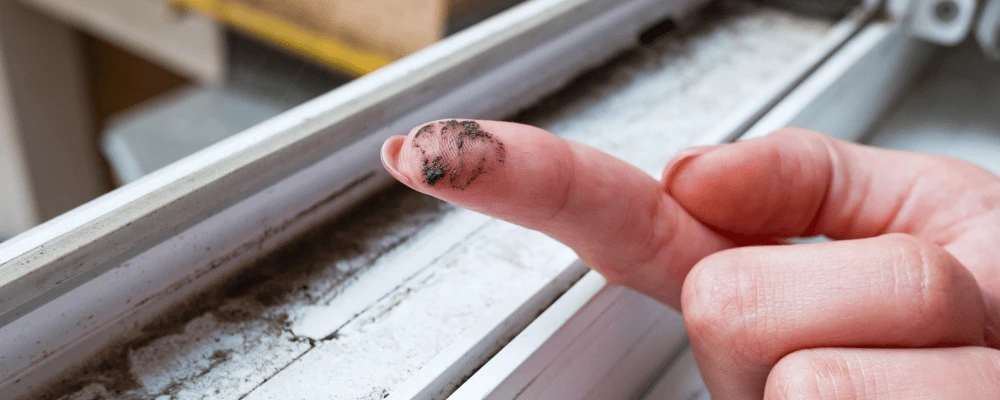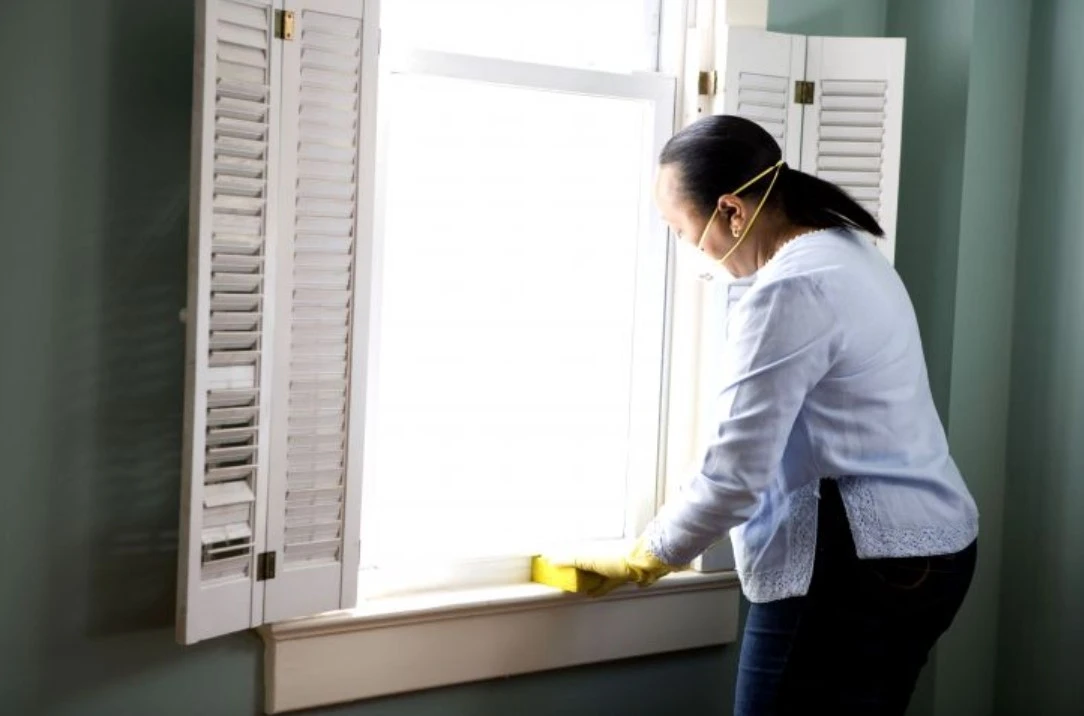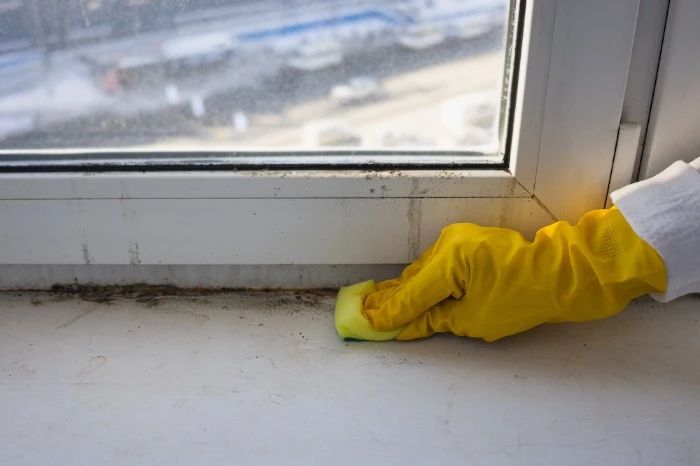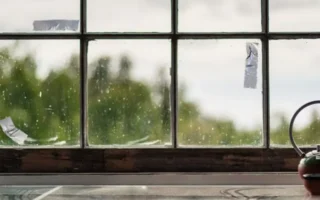Mold can be a persistent and unsightly problem, especially in areas like window sealants where moisture accumulates. Mold damages the surfaces it grows on and poses health risks to you and your family. The causes of mold growth in window sealant typically stem from excessive humidity, poor ventilation, or water leaks. Identifying these issues early can save time and effort down the line.
Removing mold requires a systematic approach:
- Start with proper cleaning solutions.
- Scrub away the growth with care.
- Ensure everything dries thoroughly afterward.
Regular maintenance goes a long way in preventing future infestations. For those looking for natural alternatives to chemical cleaners, options like vinegar or baking soda can effectively combat mold without harsh side effects.
Proper ventilation is also essential; ensuring that air circulates freely within your home helps maintain lower humidity levels and reduces moisture buildup significantly. By staying proactive about maintaining clean windows and keeping an eye out for signs of mold development, you create a healthier living environment for everyone at home.
Understanding mold and its dangers

Countless types of fungi thrive in damp environments, including mold. It reproduces through tiny spores, which can easily become airborne and spread throughout your home. Mold may seem harmless initially, but it can pose significant health risks. Mold spores can lead to respiratory issues, allergic reactions, and even more severe conditions in vulnerable individuals.
Symptoms like coughing, sneezing, or skin irritation are common signs of an unhealthy indoor environment. The presence of mold in your home can damage its structural integrity beyond health concerns. Prolonged exposure might weaken materials like wood and drywall.
Causes of mold in window sealant
Mold thrives in damp and warm environments, making window sealant a prime target. Several factors contribute to mold growth in this area. First, poor insulation can lead to condensation forming on window surfaces. When moisture collects, it creates the perfect breeding ground for mold spores.
A cause is inadequate sealing. Water can easily seep through if your windows are improperly sealed or the sealant has degraded over time. This persistent moisture invites mold into the mix. Humidity levels play a significant role as well. High humidity from cooking, bathing, or drying clothes indoors increases the likelihood of molds taking root. Lack of sunlight contributes to this issue. Mold prefers dark spaces where they can flourish without interruption.
Steps to remove mold from window sealant

- Removing mold from window sealant requires a careful approach. Start by gathering your supplies: rubber gloves, a mask, and cleaning agents like vinegar or bleach.
- Begin by ensuring the area is well-ventilated. Open windows to allow fresh air in while you work. This helps reduce the inhalation of any spores.
- Next, apply your chosen cleaner directly to the affected areas. If using vinegar, spray it generously on the moldy sealant. For bleach, mix one part bleach with ten parts water before applying.
- The solution sits for 10 minutes to effectively penetrate and kill mold spores. After this time, scrub gently with an old toothbrush or soft cloth to remove stubborn spots.
- Rinse thoroughly with water afterward; this step is crucial as it removes any leftover residue that could encourage future growth. Drying the area completely will further help in preventing recurrence.
Preventing future mold growth
Preventing future mold growth requires a proactive approach. Start by regularly inspecting your window seals for signs of humidity and wear. Keep the area around the windows clean and dry. Dust and dirt can trap moisture, creating an ideal environment for mold to thrive.
They are using high-quality silicone sealants designed to resist mildew. These products provide better protection against moisture infiltration compared to standard options. Ensure your home is well-ventilated, especially in damp areas like bathrooms and kitchens. Opening windows or using exhaust fans can help circulate air effectively.
Monitor indoor humidity levels as well. Aim to keep them below 60% with dehumidifiers when necessary, particularly during humid months. Addressing any leaks promptly, such as water intrusion from roofs or walls, often increases moisture levels in window seals.
Natural alternatives for removing mold

Natural alternatives can effectively tackle mold for those looking to avoid harsh chemicals. One popular solution is vinegar. Its acetic acid content helps break mold and mildew without leaving toxic residues. An option is baking soda, a versatile powerhouse in cleaning. Mix it with water to create a paste that easily scrubs away stubborn patches on window sealant while neutralizing odors.
Tea tree oil also emerges as an excellent choice. A few drops mixed with water can form a potent spray that removes existing mold and is a preventative measure against future growth. Hydrogen peroxide offers another eco-friendly alternative. A 3% concentration can be sprayed directly onto the affected area, allowing it to penetrate and eliminate spores safely.
Importance of proper ventilation and maintenance
Proper ventilation prevents mold growth, especially in areas like your windows. When air circulates freely, moisture levels decrease, making mold development harder. Regular maintenance of window seals also plays a significant role. Checking for cracks or gaps can prevent water from seeping in and create the perfect mold environment.
Opening windows to let fresh air flow helps reduce humidity indoors. Consider using exhaust fans in kitchens and bathrooms, where moisture tends to accumulate. Cleaning your window frames regularly removes dust and grime that can attract moisture. A little effort goes a long way toward keeping your living space healthy.
Investing time into these practices not only prevents mold but also enhances the overall quality of indoor air. Prioritizing ventilation and maintenance makes homes more comfortable and safe for everyone.




